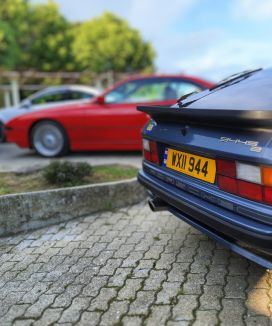Is the BMW E60 M5 a Future Classic?
Table of Contents
Have you ever nestled into the cockpit of a titan? I’m not referring to a colossus of myth, but a titan of the tarmac – the BMW E60 M5. This machine, much like a royal lion, embodies both ferocity and grandeur in equal measure.
Let’s rewind the clock a bit. The year was 2005, and BMW, a marque renowned for its precision, elegance, and “Ultimate Driving Machine” slogan, decided to rewrite the rulebook. They did something unexpected, something unprecedented, something… beastly. They put a Formula 1-inspired V10 engine into a family sedan.
Yes, you read that right. A V10. In a sedan.
Dubbed the E60 M5, this car was a departure from the company’s previous M5 models, which had always been known for their subtle sophistication.
This car, however, was far from subtle. It was a wolf in sheep’s clothing – or, perhaps more accurately, a cheetah in a tuxedo.
The E60 M5 was met with raised eyebrows and a hint of skepticism. After all, it was a bold move. But bold moves are what create classics. And the E60 M5, with its growling V10 and stealthy demeanor, may just be a future classic in the making.
But before we embark on this journey, let’s take a moment to consider: What makes a classic car? Is it age, design, performance, or rarity? Or is it something less tangible, something akin to charisma, that certain ‘je ne sais quoi’?
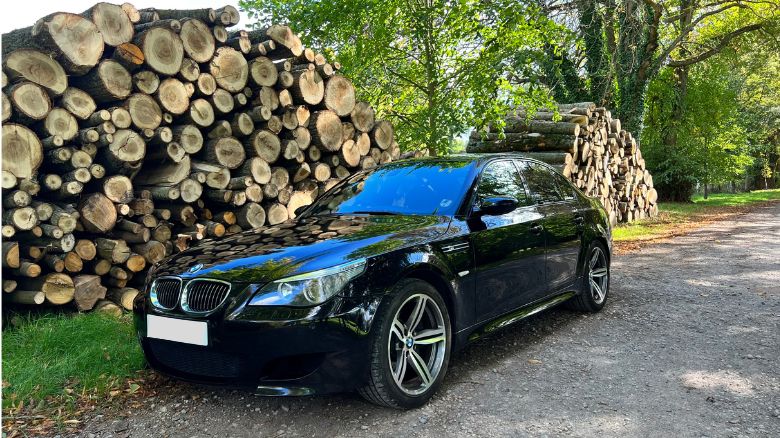
Can a car that was once dismissed as too aggressive, too different, and perhaps a little too audacious become a future classic?
Stick around, fasten your seatbelts, and let’s find out.
BMW E60 M5 Background
The E60 M5 wasn’t born in a day. It was a carefully planned, meticulously executed vision that started with a bold question: what if? What if we took our stately sedan and gave it the heart of a race car? The answer to that question is a story worth telling.
BMW has always had a knack for pushing boundaries. They didn’t just want to make cars; they wanted to make driving machines. The E60 M5 is a testament to that ethos.
The idea for the E60 M5 came from a daring proposition within BMW. Their M division, the mad scientists of the BMW family, had always been about performance. And in the mid-2000s, they were looking for their next big thing.
Their eyes turned to Formula 1. At the time, BMW was a key player in the sport, providing engines to the Williams team, and later their own BMW Sauber team.
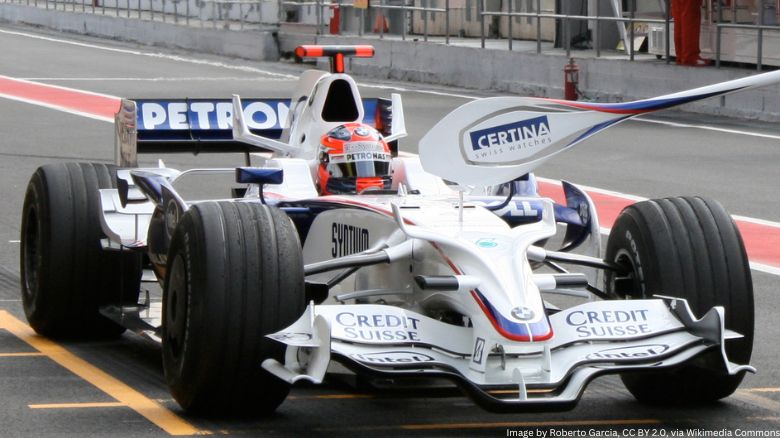
The M Division was captivated by these high-performance powerhouses and started toying with a rather unconventional idea. What if they could put an F1-inspired V10 engine into a street car?
The idea was audacious, to say the least. Yet, it was exactly the kind of counter-intuitive thinking that could lead to something extraordinary.
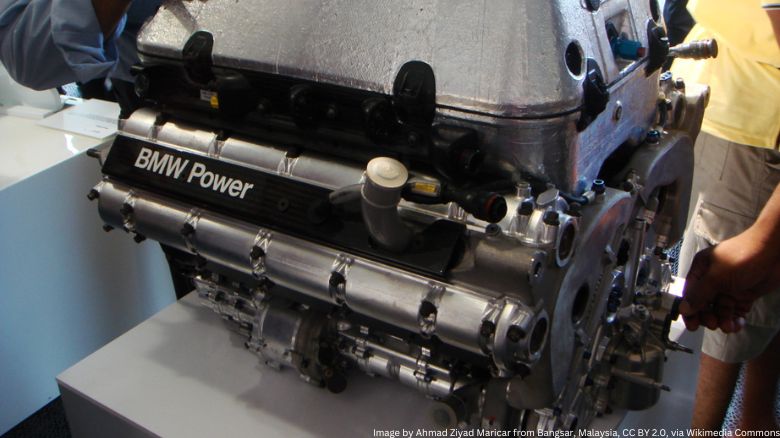
With that, the E60 M5 project was born. It was an uphill task, fitting a race-inspired engine into a family sedan. It’s like trying to fit a tornado into a bottle – the power is immense, and controlling it is a challenge.
The M Division, however, rose to the occasion. They not only made the engine fit, but they made it sing.
The E60 M5, when it was unveiled, was a feat of engineering. Here was a family sedan that could roar down the autobahn at over 200 mph, all while cradling its occupants in luxurious comfort. It was a car that blurred the line between luxury and performance.
But the decision to use a V10 was not just about performance. It was also a nod to BMW’s heritage. The company’s first-ever car, the Dixi 3/15, was powered by a 4-cylinder engine, just as the first M5, the E28, was powered by an inline-six.
The E34 and E39 M5s used V8 engines. So, logically, the next step in the M5’s evolution was a V10. It was as if BMW was saying, “We’ve done it before, we’ll do it again, but this time, we’ll do it bigger and better.”
And bigger and better it was. But was it too big? Too different? This was the question that greeted the E60 M5 upon its debut.
As we delve deeper into this beast’s journey, let’s keep that question in mind: can something so audacious, so counter to the norm, become a classic?
Public Reception of the BMW E60 M5
When the E60 M5 was first introduced to the public, the reception was much like when a new song hits the radio – mixed reviews with a side of shock. Here was a luxury sedan that was baring its teeth, showing a side of BMW that many had never seen before.
The E60 M5 was a car that refused to whisper, choosing instead to roar. The V10 was an absolute powerhouse, pushing out over 500 horsepower, enough to blast the car from zero to 60 mph in just 4.5 seconds.
For many, this was breathtaking. Car enthusiasts reveled in the audacity of it all. The sheer joy of piloting a family sedan with the heart of a race car was an intoxicating prospect.
Critics hailed it as a masterstroke, praising BMW for daring to dream and for making that dream a reality. They dubbed it a marvel of engineering, a “super sedan” that could give any sports car a run for its money.

Yet, for all its praises, the E60 M5 had its share of critics. Some purists argued that a V10 was too much for a sedan, that it was overkill. They claimed it was like putting a jet engine in a rowboat – impressive, but unnecessary.
Furthermore, the aggressive design of the E60 M5 was a departure from the understated elegance that BMW was known for. The E60 M5 had more in common with a muscle car than a luxury sedan, and for some, this was a step too far.
The most significant point of contention, however, was the car’s SMG transmission. In an effort to marry the raw power of the V10 with the refinement of a luxury car, BMW opted for a 7-speed Sequential Manual Gearbox (SMG). This was a gearbox that, on paper, promised the best of both worlds – the control of a manual and the convenience of an automatic.
In reality, though, it was a source of frustration for many. Some drivers found it jerky at low speeds and temperamental at times. It was as if the car was trying to be two things at once, and in the process, was falling short of both.
Thankfully for those in America BMW did subsequently release a manual gearbox option, although these examples are few and far between.
In many ways, the E60 M5 was a car ahead of its time. Its audacious blend of luxury and performance, of class and raw power, was a shock to the system. It divided opinion, stirred debate, and forced people to rethink what a luxury sedan could be. Whether this makes it a classic, though, is a question that still begs an answer.
Comparative Analysis of the BMW E60 M5
When we look at the E60 M5 within the context of its siblings in the M series, it stands out like a flare in the night. It’s different, audacious, and refuses to play by the traditional rulebook. Yet, it’s these very aspects that make it such a fascinating car to discuss.
Let’s start with the heart of the beast – the engine. The E60 M5’s V10 is an outlier in the M5 family. Its predecessors, the E28, E34, and E39, all featured naturally aspirated engines, but none of them had ten cylinders.
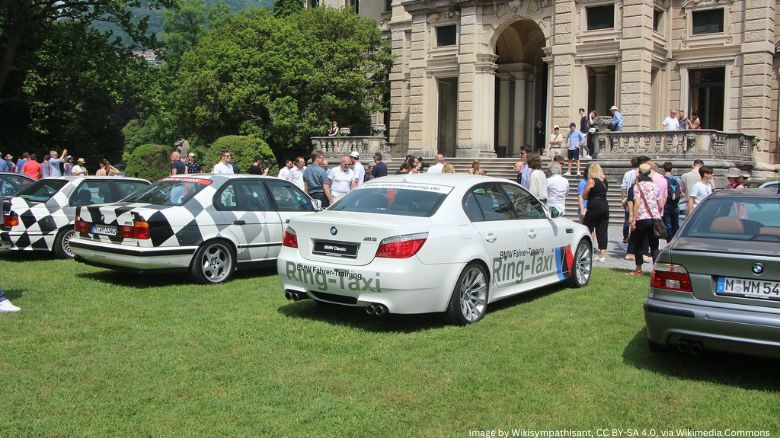
The E60 M5’s younger siblings, the F10 and the F90, both opted for twin-turbo V8s. The V10 is unique to the E60, a testament to a time when BMW dared to think differently.
Next, let’s look at the transmission. The E60 M5’s SMG transmission was a bone of contention for many, yet it was undeniably a part of the car’s character. It was BMW’s attempt to blend the worlds of luxury and performance, even if it didn’t quite hit the mark.
As technology progressed, subsequent M5 models, such as the F10 and F90, opted for dual-clutch transmissions and later, automatic transmissions, which were seen as more user-friendly, but arguably lacked the character and distinctiveness of the SMG.
Now, let’s talk about design. The E60 M5, with its muscular stance and aggressive lines, was a departure from the understated elegance of the E39 M5.
It was a car that wanted to be noticed, not just heard. This was a point of contention for purists who preferred the subtle, ‘sleeper’ aesthetic of previous M5 models, making the E60 M5 a unique chapter in the M5’s design history.
In terms of performance, the E60 M5 was a leap forward. It was faster, more powerful, and more aggressive than any M5 before it.
It was a car that pushed the boundaries of what a luxury sedan could be, a car that refused to be pigeonholed. Subsequent M5 models have continued this trend, but it was the E60 M5 that set the bar.
When we look at the E60 M5 in comparison to its siblings, it’s clear that it’s an outlier. It’s a car that dared to be different, to defy expectations, to push the envelope.
The E60 M5 Versus Its Contemporaries
When the E60 M5 roared onto the scene, it didn’t just stand out among its siblings, it towered over its contemporaries. Imagine a middleweight boxer stepping into the ring with heavyweights, and not just holding its ground, but landing knockout punches. That was the E60 M5.
The automotive world of the mid-2000s was dominated by German luxury sedans, the Mercedes-Benz E63 AMG and the Audi RS6, each with their own distinct personalities.
But the E60 M5 was something different. It was a wild card, a joker in the pack. It was as if BMW had taken the rulebook, ripped it up, and tossed it into the wind.
The most obvious point of difference was the naturally aspirated V10 engine. At a time when most luxury sedans were sticking to V8s, BMW went all out and put a V10 into the E60 M5.

This wasn’t just a bigger engine; it was a statement. It was BMW’s way of showing that they weren’t afraid to be different, to take risks, to push the boundaries.
The V10 gave the E60 M5 an edge, a rawness that its contemporaries lacked. It was like a symphony orchestra with an electric guitar – unexpected, but undeniably thrilling.
Then there was the performance. The E60 M5 wasn’t just quick; it was blisteringly fast. With over 500 horsepower under the hood, it could hit 60 mph in under 5 seconds and had a top speed of over 200 mph, making it one of the fastest sedans in the world at the time. It wasn’t just a luxury sedan; it was a luxury sedan with the heart of a racing car.
The E60 M5’s design also set it apart from its contemporaries. Where other luxury sedans were elegant and refined, the E60 M5 was muscular and aggressive.
It had a presence, an aura that made it stand out in a crowd. It was a car that demanded attention, a car that refused to be ignored, and still does to this day.
The Criticism and Controversies Surrounding the E60 M5
Like a star shining too brightly, the E60 M5’s audacity didn’t come without its share of flares and flickers. Two points of criticism have followed the car like shadows: its SMG transmission and reliability issues.
First, let’s tackle the elephant in the room – the SMG transmission. The Sequential Manual Gearbox, an innovation designed to give drivers the best of both worlds – manual control with automatic convenience – instead served up a cocktail of frustration for many.
At low speeds it’s jerky, stubborn, and about as smooth as a gravel road. It was as if the car was trying to tame the wild beast under its hood, and at times, it seemed to be losing the fight.
This characteristic gave the E60 M5 a reputation for being temperamental, a car that needed to be understood before it could be enjoyed.
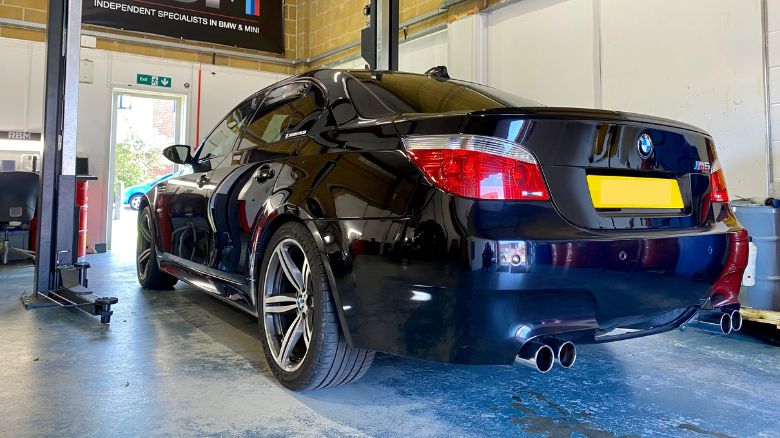
But the SMG transmission was just one part of the puzzle. The E60 M5 has also been plagued by questions over its reliability. Maintenance costs have always been high, even for a luxury car, and the V10 engine, as thrilling as it was, had a reputation for being high maintenance.
Issues with the Vanos system (BMW’s variable valve timing system), rod bearings, and high oil consumption were not uncommon. Owning an E60 M5 was likened to owning a high-strung thoroughbred – rewarding, but demanding.
These issues have followed the E60 M5 like a specter, casting a shadow over its many achievements. For some, they are seen as part of the car’s character, quirks to be accepted and even loved. For others, they are flaws that cannot be ignored.
But here’s a thought: can these criticisms actually enhance the E60 M5’s status as a future classic? After all, many classics are known for their quirks and idiosyncrasies. Could it be that the E60 M5’s flaws are part of what makes it special?
The Making of a Classic: A Counter-Argument
In the world of classic cars, there’s a peculiar phenomenon. The very quirks and idiosyncrasies that might be seen as flaws in a new car often endear classics to their fans.
These quirks add character, they tell a story, and they set the car apart. Could it be that the criticisms of the E60 M5 might actually bolster its claim to be a future classic? Let’s explore this counter-argument.
Take the SMG transmission, for example. Yes, it was jerky at low speeds. Yes, it could be temperamental. But it was also a sign of a car that refused to be tamed, a car that wanted to be driven, not just ridden.
It’s always been a part of the car’s character, a testament to BMW’s audacious attempt to blend the raw power of a V10 engine with the refinement of a luxury sedan. In many ways, the SMG transmission is a symbol of what the E60 M5 stands for: a car that dares to be different, to push the boundaries, to break the mold.
As for the reliability issues, they too can be seen in a different light. Yes, the E60 M5 can be high maintenance. Yes, it has its share of mechanical woes. But isn’t that part of the thrill of owning a classic car?
The time spent in the garage, the joy of getting your hands dirty, the satisfaction of keeping a piece of automotive history on the road – these are things that many classic car enthusiasts live for.
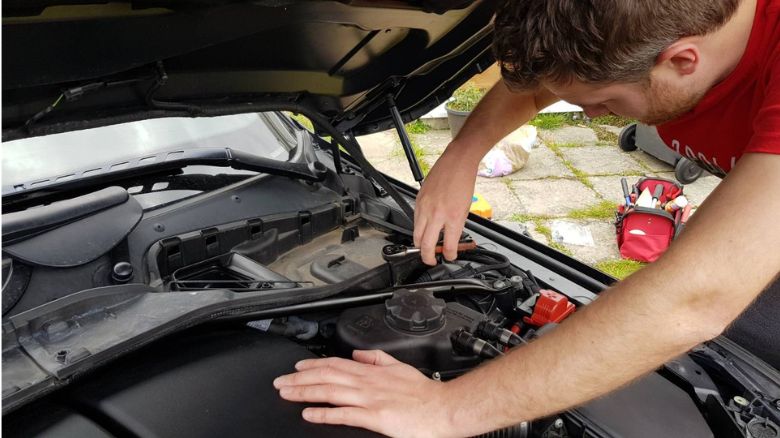
But perhaps the most compelling argument for the E60 M5’s classic status is this: it’s a car that elicits emotion. It’s a car that stirs debate, that divides opinion, that provokes thought.
It’s a car that isn’t afraid to be different, to stand out, to defy expectations. And isn’t that what a classic car should do? Shouldn’t a classic car be a car that makes you feel, a car that leaves a lasting impression, a car that stands the test of time?
Signs of a Future Classic
The term “classic car” is as elusive as it is evocative. For some, a classic car is an old car. For others, it’s a rare car. But let’s consider another definition: a classic car is a car that has stood the test of time, not just in terms of durability, but in terms of design, engineering, and emotional impact.
It’s a car that has made a significant impact on automotive history, a car that is remembered long after it has ceased production. Let’s apply these criteria to the E60 M5 and see how it fits.
Design: The E60 M5, with its muscular stance and aggressive lines, is a car that stands out. It’s a car that has a presence, an aura. It’s a car that demands attention, a car that refuses to be ignored.
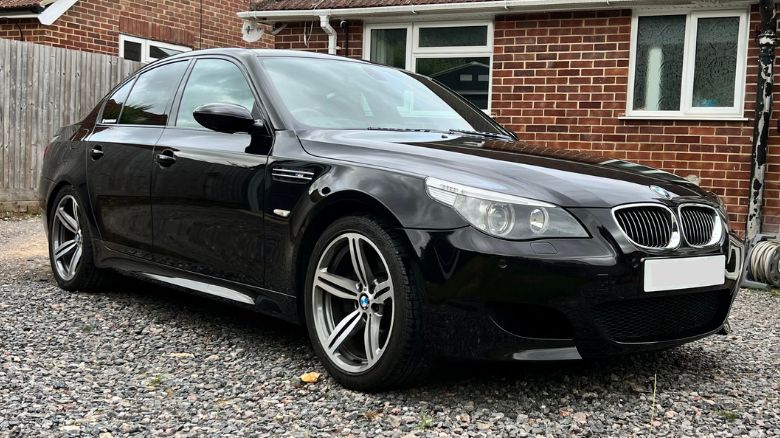
This bold design sets it apart from its more conservative siblings and contemporaries. Whether you love it or hate it, there’s no denying that the E60 M5 is a car that leaves a lasting impression. And isn’t that a sign of a classic car?
Engineering: The E60 M5 was a technical marvel when it was launched. Its engine was a testament to BMW’s engineering prowess, a symbol of the company’s ambition to push the boundaries of what a luxury sedan could be.
The SMG transmission, despite its criticisms, was an audacious attempt to blend the worlds of luxury and performance. These engineering feats have not only stood the test of time, but they have also become a part of the car’s character, a part of its story.
Emotional Impact: The E60 M5 is a car that stirs emotions. It’s a car that sparks debate, that divides opinion, that provokes thought. It’s a car that isn’t afraid to be different, to stand out, to defy expectations.
Whether it’s the roar of the V10 engine, the jolt of the SMG, or the thrill of pushing the car to its limits, the E60 M5 is a car that leaves a lasting impression. It’s a car that makes you feel. And isn’t that what a classic car should do?
Historical Impact: The E60 M5 was a milestone in BMW’s history. It marked a time when BMW dared to be different, to take risks, to push the boundaries.
It set a new standard for performance sedans, a standard that subsequent M5 models have strived to live up to. It’s a car that has left its mark on automotive history.
So, does the E60 M5 fit the criteria of a classic car? In terms of design, engineering, emotional impact, and historical impact, the answer is a resounding yes.
But there’s one more criterion to consider: time. The E60 M5 is still a relatively young car. Will it stand the test of time? It’s impossible to know just yet. But one thing is certain: the E60 M5 has all the ingredients of a classic car.
The Rising Star: Current Trends Surrounding the E60 M5
In the world of automotive trends, things can change in the blink of an eye. One moment a car is an overlooked outlier, the next it’s the talk of the town. This is exactly what’s happening with the E60 M5.

Once seen as an audacious risk-taker, the E60 M5 is now being celebrated for the very same reasons. Its V10 engine, once seen as overkill, is now being lauded as a masterpiece of engineering, a dying breed in a world moving towards electric and hybrid powertrains.
There’s a sense of nostalgia creeping in, a longing for the days when a luxury sedan could have the heart of a supercar.
The transmission, too, is getting a second look. What was once criticized for being too abrupt is now seen as a symbol of the car’s character, an integral part of the driving experience.
It’s a reminder of a time when driving a car wasn’t just about getting from point A to point B, but about the journey itself.
And then there’s the design. With its muscular lines and aggressive stance, the E60 M5 stands out in a sea of increasingly homogeneous luxury sedans.
It’s a car with character, a car with presence, a car that refuses to blend in. And in a world where individuality is becoming increasingly valued, the E60 M5’s design is earning newfound appreciation.
The E60 M5’s growing popularity is also reflected in its rising market value. Prices have been steadily climbing, a clear sign that demand is starting to outstrip supply.
The E60 M5 is becoming a sought-after commodity, a trophy for collectors and enthusiasts alike.
And perhaps most telling of all is the car’s growing online presence. From social media posts to online forums to YouTube videos, the E60 M5 is enjoying a surge of interest. It’s a car that is being talked about, debated, celebrated. It’s a car that is making waves.
So, is the E60 M5 becoming more appreciated, more sought-after? The signs certainly suggest so. It seems that the risk-taker, the wild card, the joker in the pack, is having the last laugh.
Owners’ Perspective: A Love Letter to the E60 M5
As we weave this tale of the E60 M5, we cannot overlook one crucial element – the owners, the people who have embraced this wild card, who have seen past its quirks and idiosyncrasies, who view their car not just as a mode of transport, but as a future classic.
Take, for example, my own love affair with the E60 M5. Purchased in 2021, my E60 M5 has been a source of joy and pride, a testament to BMW’s audacious ambition.
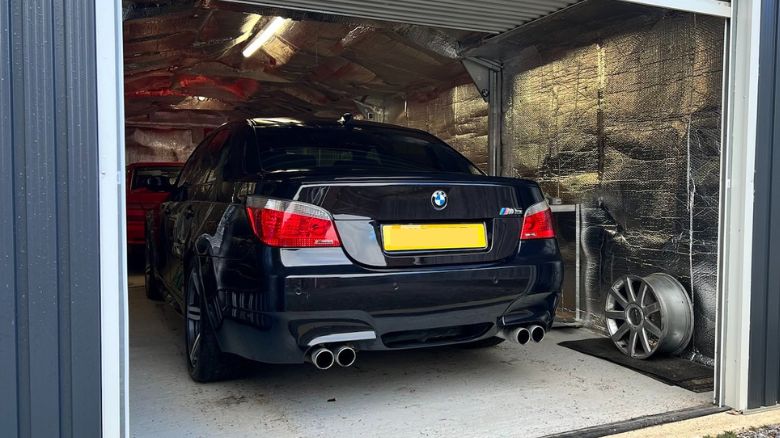
For me, the E60 M5 is more than just a car; it’s a piece of automotive history, a car that dares to be different, a car that stands out in a sea of sameness.
The internet is rife with horror stories about the E60 M5’s reliability, tales of mechanical woes and high maintenance costs. But for me, these stories haven’t materialized.
Sure, I’ve spent money on preventative maintenance, replacing rod bearings, throttle actuators, and fuel injectors among other things.
But these expenses haven’t been burdens, rather investments, part of the joy of owning a car with a character as strong as the E60 M5’s. They were planned and budgeted for well ahead of picking up the keys.
In my own personal experience, owning an E60 M5 is about more than just driving. It’s about preserving a piece of automotive history, about cherishing a car that dared to be different. It’s about the thrill of the V10 engine, the joy of driving a car that isn’t just about getting from point A to point B, but about the journey itself.
Embracing the Quirks: Owners and the E60 M5’s Criticisms
In the world of automotive enthusiasts, there’s a certain breed of owner that doesn’t shy away from a car’s criticisms and issues but instead, embraces them.
They see them not as nuisances but as challenges, not as drawbacks but as characteristics that make their car unique. Owners of the E60 M5 fall squarely into this breed.
For example, there’s an emerging narrative among owners that learning to master the SMG’s quirks is part of the joy of owning the car. They’ll tell you that once you get the hang of it, it’s like a dance – a dance between man and machine that is as satisfying as it is exhilarating.
Perceived reliability issues are another area where well-informed owners have taken an unusual approach. Instead of bemoaning the high maintenance costs, they see it as part of the experience of owning a high-performance luxury sedan.
They’ve taken a proactive approach, investing in preventative maintenance like replacing rod bearings before they have a chance to cook the highly-strung engine.
Some have even taken it a step further, turning these potential problems into opportunities for customization. They’ve swapped out the SMG for a manual transmission, added aftermarket parts to enhance performance and reliability, or made modifications to make the car truly their own.
Not ideal for originality and resale value, but it’s a testament to their commitment to their cars, a sign of their passion for the E60 M5.
In essence, E60 M5 owners have flipped the script on the car’s criticisms. What were once seen as negatives can now be seen as opportunities for engagement, for personalization, for creating a bond between man and machine.
The Market Perspective: Unraveling the E60 M5’s Value
In the world of automobiles, market value is often a telling indicator of a car’s status and desirability. It’s a tangible measure of a car’s worth, a reflection of its demand and appeal. With the E60 M5, this narrative becomes particularly interesting.
Here are the average sale prices of the E60 M5 over the last five years:
But what do these numbers tell us?
Well, they hint at a car that has had its fair share of ups and downs, a car that has seen its value fluctuate, but overall, a car that has seen its value rise over time.
It’s a sign of a car that is becoming increasingly sought-after, a car that is becoming more appreciated, more desired.
But more than that, these numbers suggest a growing appreciation for what the E60 M5 represents – a bold, audacious approach to automotive design and engineering.
It’s a growing recognition of the E60 M5’s unique position in BMW’s history.
Gazing into the Crystal Ball: The E60 M5’s Market Future
Predicting the future of the car market is no easy task, akin to gazing into a crystal ball shrouded in fog. However, trends, expert opinion, and historical data can shed some light on what may lie ahead for the E60 M5.
Experts in the field seem to be in agreement: the E60 M5’s market value is set to rise. And this time around I’ve put my money where my mouth is and invested in one myself. I know there’s plenty of risk involved, but for me, the potential returns outweigh that risk.
There’s a growing consensus that the car’s audacious approach, its unique place in BMW’s history, and its ever-increasing appeal among enthusiasts will continue to drive its market value upwards.
Historical data bolsters this view. Despite a few dips and turns, the overall trajectory of the E60 M5’s market value over the past five years has been upwards. It’s a trend that suggests a growing appreciation for the car, a rising demand that is outstripping supply.
But perhaps most telling is the current trend. The E60 M5 is increasingly being celebrated for its bold choices, for its refusal to blend in, for its character and charm.
It’s gaining a reputation as a car that is unlike any other, a car that stands out, a car that turns heads. This growing appreciation suggests a bright future for the E60 M5 in the market.
So, while the future is never certain, the signs all point to a promising horizon for the E60 M5. Its market value is set to rise, its status as a potential classic is becoming increasingly cemented, its story is being written with each passing day.
It’s clear that the E60 M5 is a car that is defying expectations, a car that is shaping its own destiny, a car that is becoming a legend in its own right. Let’s delve deeper into this journey.
Conclusion: The E60 M5 – A Future Classic in the Making?
As we reach the end of this automotive odyssey, let’s revisit the twists and turns of our journey. We’ve explored the birth of the E60 M5, a car that emerged from BMW’s daring push into uncharted territory.
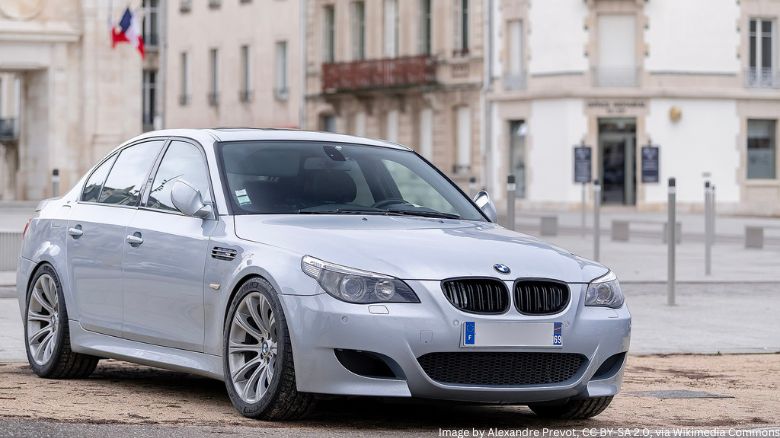
We’ve delved into its unique features, its boundary-pushing performance, its audacious design. We’ve dissected its criticisms, its quirks, its idiosyncrasies. And finally, we’ve studied its market performance, its surprising resilience, its potential trajectory.
This journey points towards one destination: the E60 M5 is a future classic in the making. Its audacious design, its daring engineering choices, its position in BMW’s history, and its growing appreciation among enthusiasts all point towards this conclusion.
But here’s the twist: A classic car is not defined by its market value, its features, or its performance. A classic car is defined by its story. And the E60 M5’s story is still being written.
It’s a story of defiance, of standing out from the crowd. It’s a story that is being written by every owner who cherishes their E60 M5, by every enthusiast who admires its daring approach, by every critic who debates its merits.
In this world of fast-paced changes and fleeting trends, the E60 M5 stands as a testament to a time when BMW dared to defy convention and to challenge the status quo. It’s a reminder of a time when a car was not just a mode of transport, but a statement, a symbol, a story.
So, is the E60 M5 a future classic? It’s a resounding yes from us. We’ll truly never see anything like it again. It’s a one-time opportunity to own a sedan with an F1-inspired engine.
As we close this chapter, we invite you to join the conversation. Share your thoughts, your views, your stories. Is the E60 M5 a future classic in your eyes?
We’re eager to hear what you think. After all, the E60 M5’s story is not just BMW’s story. It’s our story. It’s your story. Let’s write it together.
The Car Investor’s Future Classic Rating: 3.8 / 5
ABOUT THE AUTHOR
Adam Chinn writes about the intersecting worlds of classic cars, driving pleasure, and smart investment strategies. Starting his journey at 26, he’s proven that one doesn’t need to be wealthy to begin investing in classic cars.
Adam’s insights have been recognized on platforms such as MoneyInc, Swagger Magazine, and Top Speed.

